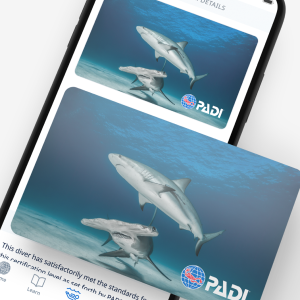Descrição
É óbvio que uma lanterna de mergulho é necessária para mergulhar à noite para ajudar você a navegar, ver seus instrumentos e observar vida aquática interessante. Mas também é uma boa ideia levar uma lanterna durante o dia para espiar o interior dos naufrágios, ver sob saliências e iluminar cavernas. Você a usará em todas as suas aventuras de mergulho para observar as rachaduras e fendas onde criaturas tímidas se escondem. Visite seu PADI Dive Center ou Resort para obter conselhos sobre lanternas de mergulho.
Standard Features
- Caixa resistente, à prova d'água e pressão.
- Um interruptor confiável que é fácil de ligar e desligar, mesmo usando luvas.
- Anel(is) de vedação estanque(s) que dão acesso às baterias e à lâmpada.
- Muitas lanternas vêm com um cordão ou clipe de pulso para que, mesmo se você a soltar acidentalmente, a lanterna possa ser recuperada.
Estilos de Lanterna de Mergulho
As lanternas primárias geralmente são modelos grandes com feixes de luz amplos e potentes, no entanto, você também pode encontrar lanternas pequenas muito brilhantes. As lanternas de reserva geralmente são menores e com feixes mais estreitos – algo que você pode levar em todos os mergulhos e, definitivamente, em mergulhos noturnos, para não ficar sem lanterna se a sua lanterna principal falhar.
Optional Features
- As baterias são recarregáveis ou descartáveis.
- Inicialmente, os sistemas recarregáveis custam mais, mas se pagam se você usar sua lanterna de mergulho com frequência e são uma escolha melhor em termos ambientais.
- Baterias/Pilhas descartáveis de alta qualidade são ótimas para uma lanterna de mergulho que você usa apenas ocasionalmente.
- Lâmpadas e energia da bateria influenciam o brilho da lanterna.
- Lâmpadas halógenas e de xenônio produzem luz brilhante, mas consomem muita energia da bateria.
- As lâmpadas LED (diodo emissor de luz) são altamente duráveis e eficientes em termos de energia.
- Lâmpadas HID (descarga de alta intensidade) fornecem o dobro de luz com metade da bateria.
- Uma alça ou suporte permite que você carregue sua lanterna confortavelmente na mão ou presa ao seu equipamento de mergulho. Algumas pequenas lanternas podem ser montadas na sua máscara, no seu pulso, em uma mangueira, no flash da sua câmera ou em qualquer outro lugar que você possa imaginar para montar uma lanterna.
- Algumas lanternas têm vários modos de energia disponíveis para aproveitar ao máximo a energia da bateria.
- Para mergulho noturno, os mergulhadores também usam bastões luminosos químicos, luzes estroboscópicas subaquáticas ou outras pequenas lanternas de marcação por segurança.
How to Choose
- Decida onde você provavelmente usará sua lanterna com mais frequência. Então pense em quão diligentemente você será ao cuidar das baterias.
- Pegue e carregue algumas lanternas por aí. É melhor que elas tenham baterias, mas saiba que elas serão mais leves na água.
- Avalie a pegada da sua mão.
- Teste o quão fácil é para você ligar e desligar.
- Pense em como será confortável segurar a lanterna durante um mergulho noturno de uma hora.
- Considere outros recursos especiais, como cordões incluídos ou vários modos de energia, e então escolha a melhor lanterna para suas necessidades de mergulho. Peça ajuda ao profissional de mergulho do seu PADI Dive Center ou Resort. Obtenha uma boa lanterna – você não vai se arrepender.
Maintenance
Esvazie e enxágue sua bolsa de mergulho após cada uso e deixe-a secar completamente antes de guardá-la.







 Detritos Marinhos
Detritos Marinhos
 Proteção Contra Tubarões e Raias
Proteção Contra Tubarões e Raias
 Adote o Azul
Adote o Azul













